#Streaming App Development Company
Explore tagged Tumblr posts
Text
#app development company in India#App Development Cost#Cost to Develop a Streaming App#Live streaming#Streaming App Development#Streaming App Development Company#Streaming App Development Company in India#Streaming App Development Cost#Streaming App Development Cost in India#Streaming App Development in India#Streaming App Development Trends#Streaming App Features
0 notes
Text
Can You Build the Next TikTok? Here’s What You Need to Know in 2025
TikTok's massive success has sparked a wave of innovation in the short-form video space. But building a similar platform doesn’t mean copying — it means creating something unique, scalable, and monetizable. That’s where finding a reliable development partner for social video apps becomes essential. With access to the right infrastructure, you can fast-track development without compromising on performance or design.
For those planning to enter the video-sharing space, it’s worth exploring custom solutions modeled after successful short-video platforms. From content discovery to creator tools, modern clone apps offer plug-and-play flexibility with room to innovate. These platforms aren’t just about videos; they’re about creating a community, retaining users, and enabling creator-driven revenue.
What Makes TikTok Work – And How You Can Do It Differently
TikTok’s core success lies in its algorithm, simplicity, and creator-first approach. But there's still room for alternatives that offer:
Regional language support
Creator revenue-sharing options
Content categories that cater to niche audiences
Tools that foster community interactions
Launching a differentiated TikTok-like app isn’t about reinventing the wheel—it’s about fine-tuning it for specific needs.
Must-Have Features for Your TikTok Alternative
To compete with or even complement TikTok, your platform should include:
AI-driven personalized feeds
Easy-to-use video editing tools
Livestreaming and event features
Support for user monetization
Scalable cloud infrastructure
These are not just features—they're strategic advantages that help with acquisition and retention.
Monetization Models That Actually Work
A TikTok clone can generate revenue in several ways:
Offering ad space for businesses
Partnering with influencers for branded content
Implementing in-app purchases for premium tools or features
Subscription plans for creators or viewers
A hybrid monetization approach ensures steady income from multiple streams.
Why Choose Miracuves for TikTok-Like App Development?
Miracuves brings a powerful combination of technical expertise and market insight. Their TikTok clone development framework is robust, customizable, and future-ready — allowing startups to go live in record time while maintaining top-tier performance.
Final Thoughts
The short-video boom is far from over. If you’ve ever considered launching your own video-sharing platform, 2025 might be your moment. With the right tech partner and a user-first strategy, you can build more than just an app — you can create a thriving ecosystem.
#TikTok clone app#TikTok clone development company#short video app development#video sharing app like TikTok#create TikTok clone#white-label TikTok clone#TikTok alternative app#social media app development#video streaming app clone
0 notes
Text
How Much Does It Cost to Develop an App Like Spotify

Why Businesses Want to Build a Music Streaming App Like Spotify
Imagine a world where music is on CDs. You need to carry many of them just to hear your favorite songs. In that sense, that’s how things were before the streaming apps revolutionized the market. Today, music lovers expect it is all there with the click of a button and for millions of tracks from any device.
Businesses are driving this change. They are looking for estimates to tap into this billion-dollar industry and find costs to build a music streaming app like Spotify. Before entering the music app development market, an app development company or entrepreneur must know the cost of music app development.
When determining the app Development Cost for a music streaming app, we consider key factors, features, and challenges that influence pricing. Let’s examine these.
Understanding the Core Features of a Music Streaming App
To make a music streaming app like Spotify, we will need to get certain core features to work smoothly on the app. High-quality audio streaming, personalized playlists, offline listening, and easy navigation are all included. You can also share music through communities. Each of these essential features greatly influences the overall cost to develop a music streaming app, and it should be considered in the planning stage.
To build a music streaming app like Spotify, you must include relevant features that guarantee a superb user experience. The features play a direct role in influencing the cost of developing a music streaming app. Some of the major features are mentioned below:
User Registration & Profile Management Email, phone, or social media should be considered for signup. There are personalization options allowing users to choose their preferences.
Music Library & Licensing A large collection of tracks needs licensed agreements by record labels and that too contributes to the Spotify clone app development cost.
AI-Powered Search & Discovery When looking for intelligent recommendations based on what they listen to. AI-driven search helps improve engagement and retention.
Offline Mode & Download Option Convenience for the users comes with the added cost of app development cost which necessitates storage infrastructure.
Personalized Playlists & AI Recommendations Custom playlists based on mood, genre, or history enhance user experience and retention.
In-app monetization & Subscriptions A solid revenue model, like ads and premium subscriptions, ensures sustainability.
Social & Sharing Features Users should be able to see other people’s playlists, follow people, and listen to artists.
Push Notifications & Engagement Tools For users, real-time alerts keep the game exciting for new releases, personal favorite recommendations, and promoted features.
Finally, these features have a significant influence on the music app development pricing and on the final price of the app development cost.
Factors That Affect the Cost to Develop a Music Streaming App
Businesses should analyze several key factors before determining the cost to develop an app like Spotify. Knowing these elements will allow you to better grasp the entire development expenses and budget accordingly.
Before calculating the Spotify clone app development cost, businesses must consider the following factors:
1. App Complexity & Features
The basic app development cost is going to be less spending with standard streaming features. Whereas an advanced app with AI Recommendations, Offline mode, and high security the pricing will be higher.
2. Choice of Platform (iOS, Android, Web)
It is known that developing one or more platforms is relatively cheaper than developing a native iOS or Android app. The cost to develop a music streaming app goes up when you develop for multiple platforms.
3. UI/UX Design Quality
A sleek, modern design enhances user engagement and adds extra cost to the music app development pricing.
4. Backend Development & Database
The synchronous loading of data should be easy on the backend and scalability should be a part of every app you develop because you do not want your app development cost to go high while carrying on with the business.
5. Third-Party API Integration
The cost to develop a music streaming app is slashed by integration with payment gateways, AI-based recommendations, and cloud storage are among them.
6. Licensing & Legal Compliance
Music licensing is one such factor that can take a large part of the cost of the Spotify clone app development.
Any of these takes part in concluding Music App Development Pricing and thus must be organized accordingly.
Spotify Clone App Development Cost Breakdown
Planning the financial aspect of your project will determine your success when crafting a Spotify clone app. You must understand what are the various components that are involved in the overall development costs. In this case, we have done a detailed breakdown of the app development expenses which includes design, development, testing & deployment. With the help of this analysis, businesses can allocate budget better and get a successful music streaming app project.
Developing a music streaming app requires careful budgeting. Below is a breakdown of app development costs based on different aspects:


However, the final Spotify clone app development cost depends upon the App Development Company you select.
Tech Stack Required to Build a Music Streaming App Like Spotify
To build a music streaming app like Spotify, you cannot choose the wrong tech stack. The tech stack matters a lot. You can pick a carefully chosen to set of tools that boost efficiency and scalability. This will keep app development costs in check. In this section, we will outline the key elements of your music streaming app's tech stack. This will help ensure it works smoothly and stays relevant for the future. Now let’s see what are the essential technologies that will help you power your app for success.
A well-structured tech stack ensures efficiency and scalability, impacting the music app development Pricing.
Frontend Development
React Native, Flutter (for cross-platform)
Swift, Kotlin (for native apps)
Backend Development
Node.js, Python, Ruby on Rails
Database Management
PostgreSQL, MongoDB, Firebase
Streaming & Storage
AWS, Google Cloud, Azure
Choosing the right tech stack influences the cost of developing a music streaming app.
Challenges in Music App Development Pricing
Working with the music streaming app development company is extremely fun but there are challenges that come with it. The power of these hurdles affects the development costs massively from handling the complex licensing agreements to building a flawless user experience. So let’s get ready because here we are about to discover what key challenges will affect your music app pricing. Let's rock and roll.
Developing a music streaming app comes with challenges that affect App Development Costs.
1. Music Licensing & Legal Compliance: Securing rights from record labels can be expensive.
2. Data Security & Copyright Issues :Ensuring data privacy and preventing piracy add to the Spotify clone app development cost.
3. Streaming Quality & Performance: Maintaining seamless streaming without buffering requires high-end infrastructure.
Addressing these challenges early helps manage music app development pricing effectively.
Monetization Strategies for a Music Streaming App
Implementation of a robust revenue model is imperative for a business to reclaim the app development cost. Subscription plans, integration of advertisement, and the existence of premium features are all crucial in helping sustain a music streaming application in terms of its financial perspective. To understand the profitability impact of the app, we will explore these strategies in detail.
To recover the App Development Cost, businesses must implement strong revenue models.
1. Subscription-Based Model: Free, premium, and family plans ensure recurring revenue.
2. In-App Advertisements: Ads for free users generate revenue while encouraging them to upgrade.
3. In-App Purchases & Exclusive Content: Limited edition tracks, live concerts, and artist collaborations add value.
4. Partnerships & Sponsorships: Collaborations with brands and artists increase engagement.
The monetization strategy should be such that the Spotify clone app development cost is reduced for the long run and profitability is maintained.
Summary
A successfully created music streaming app can be a massive game score for a business as it can give access to the flow of music to the world users. However, the cost of developing a music app streaming differs depending on the platform, features, and complexity.
Telepathy offers top-notch solutions for clone app development costs. If you are looking for an experienced app development company, we can help. Explore Telepathy’s App Development Services.
#app development company#music app development company#music streaming app#software development company
0 notes
Text
Launching Your Own Streaming Empire: The Complete Netflix Clone Development Guide
The streaming revolution has permanently changed entertainment consumption habits worldwide. For entrepreneurs eyeing this lucrative market, building a Netflix-inspired platform presents an exceptional business opportunity. This guide provides a comprehensive blueprint for developing your own streaming service that can thrive in today's competitive digital landscape.
Why Enter the Streaming Platform Market Now?
The timing for launching a video streaming service couldn't be better. Industry reports show the global streaming market will reach $330 billion by 2030, with increasing consumer demand for specialized content experiences. This growth creates space for innovative entrepreneurs to capture market segments with tailored streaming solutions.
Several factors make this an attractive business venture:
Content Democratization: Decreasing production costs enable new players to create quality original content
Niche Opportunities: Underserved audiences seeking specialized programming
Technology Accessibility: Mature development frameworks making platform creation more achievable
Shifting Consumer Preferences: Continued migration from traditional media to on-demand streaming
Defining Your Streaming Platform's Unique Identity
Before writing a single line of code, clearly define what will differentiate your Netflix clone. Successful streaming platforms excel by offering distinctive experiences:
Content Strategy: Will you focus on specific genres, regional content, or exclusive originals?
User Experience: What interface innovations will make your platform more intuitive?
Pricing Model: Will you offer tiered subscriptions, ad-supported options, or pay-per-view?
Community Features: How will you incorporate social elements to increase engagement?
Critical Development Phases and Timeline
Phase 1: Requirements Gathering and Planning
Phase 2: Design and Architecture
Phase 3: Core Platform Development
Phase 4: Advanced Features
Phase 5: Testing and Optimization
Phase 6: Deployment and Launch Strategy
Partner with Streaming Development Experts
While this guide provides a comprehensive overview, building a successful Netflix clone requires specialized expertise. At Miracuves, we provide end-to-end development services for entrepreneurs entering the streaming market.
Our team offers:
Custom feature development tailored to your audience
Scalable architecture design for future growth
Content management system customization
Cross-platform compatibility implementation
Ongoing technical support and platform evolution
Post-Launch Growth Strategies
Once your platform is live, focus on these growth drivers:
Content Expansion: Continuously refresh your library with new titles
Feature Iteration: Regularly introduce new functionalities based on user feedback
Performance Optimization: Continuously improve streaming quality and reliability
Subscription Model Refinement: Test different pricing tiers and special offers
Strategic Partnerships: Collaborate with content creators and distribution channels
📌 Tap to explore more -- https://miracuves.com/netflix-clone/
Our Website : https://miracuves.com/
Contacts : (US)+1-5162023950 or (INDIA)+91-9830009649
Email : [email protected]
Ready to launch your streaming empire? Contact our development experts to discuss your project requirements and receive a customized implementation roadmap.

0 notes
Text
Choosing the Best OTT App Development Company in India: Maxtra Technologies
The Over-the-Top (OTT) media landscape is booming, with audiences increasingly gravitating towards on-demand streaming services. For businesses looking to capitalize on this trend, developing a robust and engaging OTT app is crucial. However, navigating the complexities of app development can be challenging. This is where a reliable OTT App Development Company plays a pivotal role.
Visit Us: https://ext-6075334.livejournal.com/7843.html
#Best OTT App Development Company in India#OTT App Development Company#on-demand OTT streaming services Company in India#OTT App Development#OTT App Development Company in India#OTT App Development Company in Noida
0 notes
Text
#Build a Cost-Effective OTT App Like Hulu#OTT App Development Company#Video Streaming Apps#OTT App Like Hulu#Streaming services#OTT app development#Build OTT App Like Hulu#OTT App Development Experts#hiring Flutter Mobile App Developers#Custom mobile app development services#Cost to Develop an OTT App
0 notes
Text
#flutter app development#flutter app development company#Instant Object Recognition in Live Camera Streams#Real-time Object Detection in Flutter#top flutter app development companies
0 notes
Text
Innovative Music Streaming App Development Company for Modern Audiences

Our innovative music streaming app development company caters to modern audiences, delivering cutting-edge solutions that redefine how you experience music. We specialize in creating user-friendly, feature-rich apps that seamlessly integrate the latest technologies. From personalized playlists to high-quality streaming, our expert team ensures a top-notch listening experience. Trust us to turn your vision into a reality, providing you with an app that resonates with today's music lovers and keeps them coming back for more.
0 notes
Text
Elevate Your Real-Time Communication with Enfin Technologies: The Premier WebRTC App Development Company
In today’s fast-paced digital landscape, real-time communication stands as the cornerstone of connectivity for businesses worldwide. With remote work and virtual collaboration becoming the norm, the demand for seamless and secure communication solutions is higher than ever. This is where Enfin shines as a leading WebRTC app development company, offering tailored solutions to meet the diverse needs of businesses across industries.
Enfin : Your Trusted Partner for WebRTC App Development
At enfin , we’re dedicated to pushing the boundaries of real-time communication technology. As a premier WebRTC app development company, we leverage cutting-edge tools and methodologies to craft innovative solutions that empower businesses to connect, communicate, and collaborate effortlessly.
Customized Solutions to Suit Your Unique Requirements
Every business is unique, and we understand that one size doesn’t fit all. That’s why we take a personalized approach to every project, collaborating closely with our clients to understand their specific needs and objectives. Whether you’re looking to build a video conferencing platform, a live streaming application, or a peer-to-peer messaging solution, enfin has the expertise to bring your vision to life.
User-Centric Design for Enhanced User Experience
A successful WebRTC application puts user experience at the forefront. That’s why we prioritize user-centric design principles in our development process. Our applications are intuitive, user-friendly, and visually appealing, ensuring seamless navigation and crystal-clear audio and video quality. With enfin, users can enjoy an unparalleled communication experience that fosters engagement and productivity.
Scalable and Flexible Solutions for Long-Term Success
We understand that businesses evolve over time, and scalability is essential for sustained growth. Our WebRTC applications are designed to scale seamlessly, whether you’re serving a handful of users or millions of concurrent connections. With enfin, you can rest assured that your communication platform will adapt to meet your evolving needs, ensuring a seamless experience for all users.
Robust Security Measures to Protect Your Data
Security is paramount in real-time communication applications, and we take it seriously. enfin implements robust encryption, authentication, and access control measures to safeguard your data and ensure privacy and confidentiality. With our solutions, you can communicate with confidence, knowing that your sensitive information is protected against unauthorized access and cyber threats.
Comprehensive Support and Maintenance for Peace of Mind
Our commitment to customer satisfaction extends beyond the development phase. enfin
provides comprehensive support and maintenance services to ensure that your WebRTC application operates smoothly and efficiently at all times. From troubleshooting technical issues to implementing updates and enhancements, our dedicated team is here to support you every step of the way.
Unlock the Power of Real-Time Communication with enfin
In today’s digital age, effective communication is essential for success. With enfin as your trusted partner, you can unlock the power of real-time communication and take your business to new heights. Contact us today to learn more about our WebRTC app development services and how we can help you achieve your goals.
0 notes
Text
In the growing world of digital media, podcasts have emerged as a powerful and engaging form of content. Live podcast streaming software is crucial in delivering content to a global audience.
Podcast streaming software refers to the technology that allows the distribution and consumption of podcasts over the Internet. It facilitates the seamless streaming or downloading of audio content, allowing users to explore various topics, genres, and creators.
#custom software development company#Develop a podcast streaming app#live streaming podcast software#Podcast streaming software development#streaming app development#video streaming app development#Web streaming app
0 notes
Text
How to Build a Cost-Effective OTT App Like Hulu?
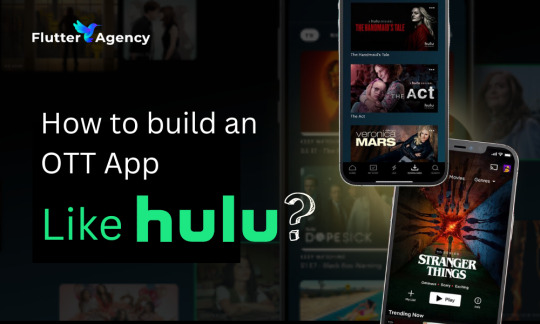
Streaming services have upended entertainment in recent years. On-demand content now flows to viewers whenever and wherever they want. These over-the-top platforms deliver shows and movies directly, bypassing traditional distribution channels. The shift has transformed how we watch, giving us unprecedented control and choice. They offer more flexibility than traditional TV’s rigid schedules.
Streaming giants Netflix, Disney+, and Hulu spearhead a worldwide entertainment revolution. More viewers prefer this convenient, customizable option.
OTT platforms soar as viewers crave personalized content. This surge sparks a parallel demand for tailored mobile app development, creating a symbiotic relationship between streaming services and app creators. These services help platforms deliver smooth, user-friendly experiences. They tailor them to diverse audiences. This makes OTT the top choice for entertainment.
What is OTT?
OTT (Over-the-Top) platforms are media services.
They deliver content directly to viewers online, bypassing cable or satellite TV. OTT platforms differ from traditional TV channels. They offer a vast library of on-demand content. This includes movies, TV shows, live events, and original productions.
Streaming services also deliver content online. This lets viewers watch videos on phones, tablets, smart TVs, and computers.
These platforms use advanced algorithms, cloud services, and smooth data streaming. This lets viewers enjoy high-quality content with minimal buffering. Hulu has used new technologies to improve user experiences. It offers personalized recommendations and ad-free viewing on multiple devices.
As OTT grows, custom mobile app development is key to success. It ensures apps perform well, engage users, and stream smoothly on all mobile devices.
Market Overview and Future Trends
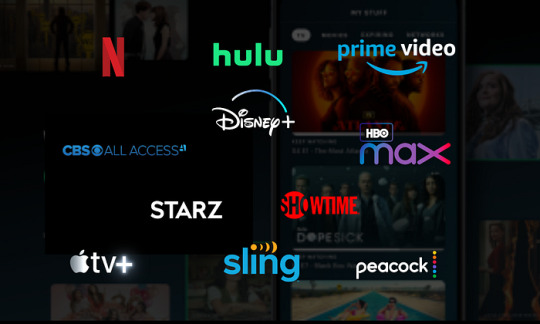
OTT services have seen huge growth in their global audience. Viewers flock to on-demand video streaming apps, abandoning traditional TV by the millions. This seismic shift reshapes entertainment consumption. Audiences crave flexibility, personalized content, and ad-free experiences. Streaming giants battle for subscribers, investing heavily in original programming. Meanwhile, cable companies scramble to adapt or risk obsolescence. As streaming devices flood homes, the living room transforms. Smart TVs now reign supreme, ushering in endless binge sessions. Algorithms shape our viewing habits, offering personalized picks at every turn. The way we consume media shifts, marking a new chapter in home entertainment. Growth will likely speed up. More consumers want easy, personalized access to their favourite content. Markets in Asia, Europe, and the Americas will see a big rise in users. This is due to better internet access and more content options.
Future trends show OTT app development is shifting. It’s moving toward better integration with smart TVs, voice control, and interactive features. Live streaming surges for sports, concerts, and news, making OTT platforms the prime real-time entertainment source. As immersive tech evolves, AR and VR will transform OTT experiences, offering users captivating new ways to engage with content. This shift promises a more interactive future for digital media consumption.
To stay ahead, many OTT platforms want to hire Flutter developers. They need cross-platform apps for seamless streaming on iOS and Android devices. Responsive, feature-rich OTT apps thrive on Flutter’s nimble framework. Its adaptability and swift performance empower developers to craft dynamic streaming experiences with ease.
Why Invest in an OTT App Like Hulu?
OTT apps like Hulu are popular now. People want on-demand content for its flexibility and convenience.
As more people leave traditional TV for streaming, businesses see great potential in custom mobile apps for OTT platforms. These services let businesses create solutions for their target audiences. They can use personalized recommendations, multi-device streaming, or exclusive content.
The OTT market has huge revenue potential. Projections show it will grow rapidly. Cord-cutting trends fuel explosive growth in the OTT market, projected to eclipse $250 billion by 2027. This seismic shift presents lucrative prospects for companies seeking to capitalize on streaming’s ascendancy. Digital platforms surge as cable falters. Smart companies seize this moment, innovating and growing in a flourishing sector brimming with untapped possibilities.
Netflix, Hulu, and Disney+ have made waves in entertainment. These streaming giants reshape how we consume media, challenging traditional TV and film. Their success stories reveal the power of on-demand content and personalized viewing experiences in today’s digital landscape.
Netflix transformed marathon-viewing and membership frameworks. Hulu combined live TV and on-demand content. Both set new standards for user experience.
Disney+ quickly became a dominant player with its vast content library and strong brand presence. These platforms show a demand for innovative OTT services. They also show that custom mobile app development can drive success in the industry.
Top Features of an OTT App
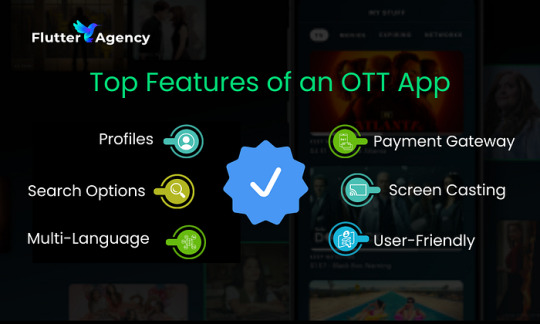
Personalized Profiles: This feature recommends content based on the user’s viewing history. This customization improves the user experience. It makes it easier to find relevant shows and movies.
Smart Search Options: Users can quickly find content with advanced search. It has filters, suggestions, and voice search. Content discovery flows effortlessly with intelligent search. Seamless efficiency defines this process, enhancing user experience. Smart algorithms sift through data, delivering relevant results swiftly.
Watchlist: Users curate their own media library with a watchlist. Saving favourites for later boosts retention and flexibility. This personalized collection fosters a sense of ownership, keeping viewers engaged and coming back for more. A simple feature with a powerful impact on the user experience.
Multi-Language Support: Multilingual options unlock worldwide appeal. Global reach demands diverse language support. This feature helps platforms reach new markets. It provides content and UIs in multiple languages, boosting accessibility and inclusivity.
Payment Gateway Integration: An OTT app can increase subscriptions. It can do this by offering multiple, secure payment options. Users can enjoy seamless transactions when purchasing or leasing content. The process eliminates friction, providing a sleek and effortless experience.
Screen Casting: Users crave flexibility in their viewing habits. The app’s casting feature delivers, enabling content to leap from small screens to TVs and projectors. This cross-device feature meets a need in today’s mobile world. Entertainment follows viewers everywhere they go.
User-Friendly Design: A smooth viewing experience depends on a straightforward, easy-to-understand design. OTT apps thrive with easy navigation and pleasing aesthetics. Smooth functionality across devices keeps users engaged. An effortless UI/UX is the cornerstone of user retention and satisfaction in the streaming world.
Monetization Models for OTT Apps
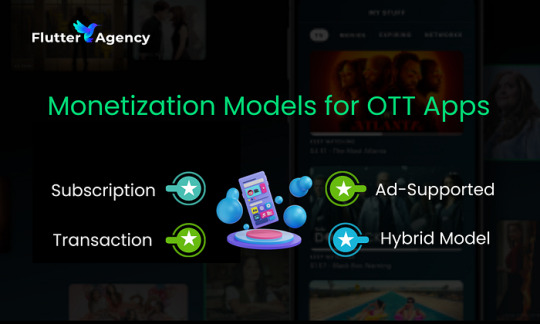
Subscription-Based (SVOD): Subscription-based platforms dominate content monetization. Netflix and Hulu exemplify this model, offering unlimited access for a recurring fee. Users enjoy diverse content while companies secure a steady income. This win-win approach fuels the streaming industry’s growth, satisfying both providers and subscribers alike.
Ad-Supported (AVOD): Free content comes with a catch: ads. Users watch commercials instead of paying. Platforms profit from advertisers, not viewers. This model flips traditional funding on its head, making entertainment accessible while keeping companies afloat through strategic marketing partnerships. This model is ideal for attracting a larger audience base that prefers free content.
Transaction-Based (TVOD): In a pay-per-view system, users pay for individual content, like movies or events. They do not subscribe to the platform. It lets users access premium content on demand. It offers flexibility for those who don’t want a full subscription.
Hybrid Model: Many OTT platforms now use a hybrid approach. It combines subscription, ad-supported, and pay-per-view options. This model is flexible. It caters to different audience preferences. It also maximizes revenue by using multiple channels. It allows platforms to reach a wider audience by offering both free and paid content options.
Steps to Build an OTT App Like Hulu
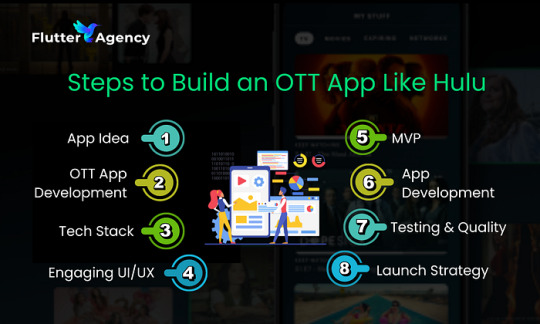
Defining the App Idea: First, identify your target audience. Then, show how your app is different from competitors. Research the market. Know user preferences. Find unique features to set your OTT app apart.
Consulting with OTT App Development Experts: Partner with a trusted firm that specializes in custom OTT apps. Consider hiring Flutter Mobile App Developers. They are experts in building fast, scalable, and cheap apps with great UX.
Choosing the Right Tech Stack: Choose scalable, high-performance tech for video streaming, real-time analysis, and secure transactions. Your stack should prioritize speed, reliability, and ironclad security measures. Opt for proven solutions that can handle growth while maintaining robust user protection. It must also handle high-traffic loads efficiently.
Designing an Engaging UI/UX: From sleek phones to expansive desktops, our design adapts flawlessly. Users navigate with ease, guided by clear pathways through content. Striking visuals enhance the journey, creating an immersive experience. Form and function unite in perfect harmony, captivating visitors at every turn. The result? A stunning, intuitive site that delights users across all devices.
Build the MVP (Minimum Viable Product): Stream, profile, pay — these core features form your MVP. Launch quickly to gather user feedback. Refine and improve based on real-world data before the full release. This lean approach maximizes efficiency and reduces wasted effort.
App Development Process: Move from design to backend development. Incorporate all essential features: content streaming, user management, and recommendation algorithms. Ensure proper content delivery mechanisms (CDNs) and high-end security protocols.
Testing and Quality Assurance: Test the app on various devices and OS. Ensure it works smoothly. Test performance, find bugs, and check security. Ensure an error-free experience for users.
Launch Strategy: Create a launch plan. It should promote the app on various platforms. It should optimize your app store listing. It should use social media marketing to attract initial users.
Post-Launch Support and Maintenance
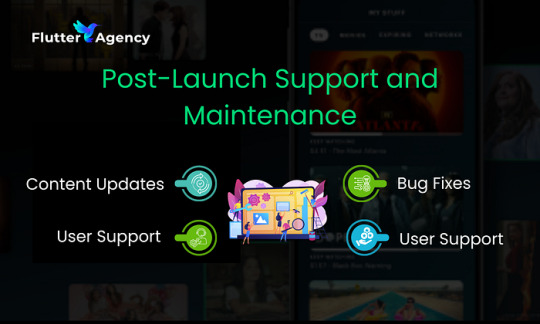
The Importance of Regular Content Updates: To keep users engaged, use fresh, updated content. Fresh content fuels user engagement. Frequent updates to your streaming library keep viewers coming back for more, ensuring your OTT platform stays relevant and exciting.
Bug Fixes, Feature Additions, and Continuous Improvements: Apps evolve after release. Fixing glitches, boosting speed, and adding capabilities keeps them sharp. Continuous improvement is key to staying ahead in a crowded market. No software launches flawlessly, but swift updates can polish rough edges and delight users. Custom mobile app development services can help. They can tailor updates based on user feedback and trends.
Providing Ongoing User Support: Quick, effective support breeds loyal users. Rapid responses and adept problem-solving boost satisfaction. Excellence in customer care fuels enduring success, cementing user relationships for the long haul.
Cost to Develop an OTT App
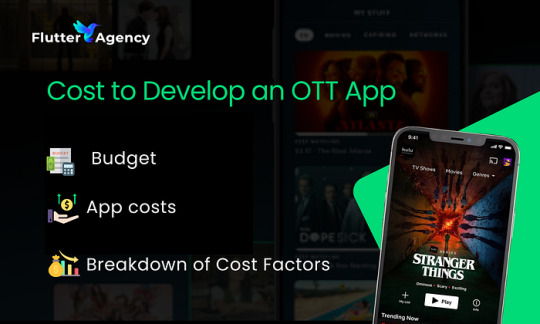
1. Breakdown of Cost Factors:
Design: UI/UX design to ensure a smooth and appealing user experience.
Development: Core functionalities like streaming, user profiles, and payment integrations.
Integrations: Third-party integrations enhance site functionality. CDNs speed delivery, payment gateways process transactions, and analytics track performance.
Post-Launch Maintenance: Post-launch, websites require continual care. Regular updates, optimizations, and support keep sites running smoothly and securely.
2. Typical Budget Range for Developing an OTT App Like Hulu
App complexity drives costs skyward. Hulu-like projects demand $100,000 to $500,000. Features, integrations, and platform support determine the final price tag. Developers must balance ambition with budget constraints. Smart planning minimizes expenses while maximizing functionality.
3. App costs hinge on several key elements
Feature count shapes pricing, with options like profiles or language support adding complexity. Integration intricacy also impacts expenses. Platform choice — iOS, Android, or web — further influences the final tally. These factors intertwine, determining your app’s ultimate price tag. Businesses seeking efficiency and cost-effectiveness often turn to Flutter developers. This versatile framework enables the creation of apps for multiple platforms using one codebase, streamlining development and reducing expenses.
Conclusion
Building an OTT platform offers huge opportunities. It lets businesses meet the rising demand for on-demand entertainment. A well-made app like Hulu can be very profitable. It can use different ways to make money. It can also reach a global audience with its advanced features.
The OTT market has vast potential for startups and established businesses. It is driven by changing user preferences and a shift to digital streaming. By using custom app development and top developers, companies can create a unique platform. Seize the moment. Launch your OTT app now to capture a slice of this thriving market. With skilled partners, cutting-edge technology, and a solid plan, you’ll create a standout streaming service. Don’t wait — your competitive edge awaits.
#Build a Cost-Effective OTT App Like Hulu#OTT App Development Company#Video Streaming Apps#OTT App Like Hulu#Streaming services#OTT app development#Build OTT App Like Hulu#OTT App Development Experts#hiring Flutter Mobile App Developers#Custom mobile app development services#Cost to Develop an OTT App
0 notes
Text
Many similar platforms have witnessed an increase in their users by up to 200%. This article explores what features make educational OTT platforms effective in their role as educational providers and how they benefit the masses in decreasing the literacy gap.

#educational OTT platforms#OTT app development company#video streaming app development#OTT platform development
0 notes
Text
The Ultimate Guide to Developing an Instagram Clone App
Creating an Instagram clone app is a complex task that involves several steps, from designing the user interface to implementing features like photo sharing, commenting, and liking. In this ultimate guide, we'll walk you through the key steps to develop an Instagram clone app using Omnino Solutions.
Step 1: Define Your App's Goals and Features
Before you start development, you need a clear understanding of what your Instagram clone app will offer. Key features to consider include:
User Registration and Authentication: Allow users to create accounts and log in securely.
Profile Management: Users should be able to edit their profiles, including adding a profile picture and bio.
Photo Sharing: Enable users to upload and share photos and videos.
News Feed: Display a feed of posts from users the current user follows.
Likes and Comments: Users should be able to like and comment on posts.
Notifications: Implement real-time notifications for likes, comments, and follows.
Search Functionality: Users should be able to search for other users and posts.
Direct Messaging: Include a private messaging feature.
Step 2: Choose the Tech Stack
Select the technologies you'll use to develop your app. Common choices include:
Frontend: React Native, Flutter, or native development (iOS and Android).
Backend: Node.js, Python (Django or Flask), Ruby on Rails, or other frameworks.
Database: PostgreSQL, MySQL, or MongoDB for storing user data and posts.
Cloud Services: AWS, Google Cloud, or Azure for hosting and storage.
Step 3: Design the User Interface (UI)
Create wireframes and mockups to plan your app's design. Tools like Figma, Sketch, or Adobe XD can be helpful. Ensure a user-friendly and visually appealing design that mimics Instagram's interface.
Step 4: Backend Development
Set up your backend to handle user accounts, posts, likes, comments, and other features. Use a RESTful API or GraphQL for communication between the frontend and backend. Implement user authentication using JWT or OAuth.
Step 5: Frontend Development
Build the frontend of your app using the chosen technology stack. Develop screens for user registration, login, profile management, news feed, post creation, and user interactions like likes and comments.
Step 6: Implement Features
Integrate the core features one by one:
User Registration and Authentication: Implement user registration and login with secure password storage.
Profile Management: Allow users to edit their profiles, including adding a profile picture and bio.
Photo Sharing: Develop the feature to upload and share photos and videos.
News Feed: Create a feed that displays posts from following users.
Likes and Comments: Add functionality for users to like and comment on posts.
Notifications: Implement real-time notifications using WebSocket or push notifications.
Search Functionality: Enable users to search for other users and posts.
Direct Messaging: Build a private messaging system.
Step 7: Testing
Thoroughly test your app to identify and fix bugs. Conduct user testing to gather feedback and make necessary improvements.
Step 8: Deployment
Deploy your backend and frontend to a hosting platform and configure your domain. Ensure your app can handle traffic and scale as needed.
Step 9: Security
Implement security measures, such as data encryption, to protect user data and prevent unauthorized access.
Step 10: Maintenance and Updates
Regularly update your app with new features and bug fixes. Monitor user feedback and analytics to make data-driven improvements.
Step 11: Legal Considerations
Ensure your app complies with data privacy regulations and Instagram's API usage policies. Create a terms of service and privacy policy for your users.
Step 12: Marketing and Launch
Plan a marketing strategy to promote your app. Create social media accounts, build a website, and use app store optimization (ASO) techniques to increase visibility. Launch your app on app stores (Google Play Store and Apple App Store).
Remember that building a successful Instagram clone app takes time, dedication, and continuous improvement. Stay updated with the latest trends in social media and adapt your app accordingly. Good luck with your Instagram clone app Script development using Omninos Solutions!
0 notes
Text
How Does Blockchain Impact Music Streaming Apps?
Have you ever wondered how that favorite new song gets from the artist's studio onto your phone? Read on to explore the technical world behind the music streaming app!
Streaming services have revolutionized how we discover and listen to music. While many appreciate the convenience and vast selection offered by music streaming apps, the intricate technology that powers these platforms often remains behind the scenes, unexplored by the average user.
From recording licensing deals to distributing royalties, running a streaming platform involves intricate scientific processes. Blockchain has emerged as an innovative solution to simplify music data and payments.
Curious how blockchain could unlock the future of Music Streaming App Development? Let's unpack the tech:
A Quick Peek Under the Hood
Before we dig into blockchain, let's pop the hood on current music streaming app technology:
Streaming Platform Backend
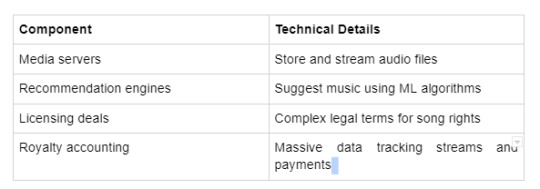
Even at internet scale, the technical nuts and bolts of a music streaming app are daunting!
This is where blockchain comes in.
Understanding Blockchain Technology
Overview of Blockchain: Distributed Ledger Technology
A blockchain is a cryptographically secured distributed ledger that records transactions in an immutable and verifiable manner. It relies on peer-to-peer networking, asymmetric cryptography, and consensus mechanisms to validate transactions in a decentralized way.
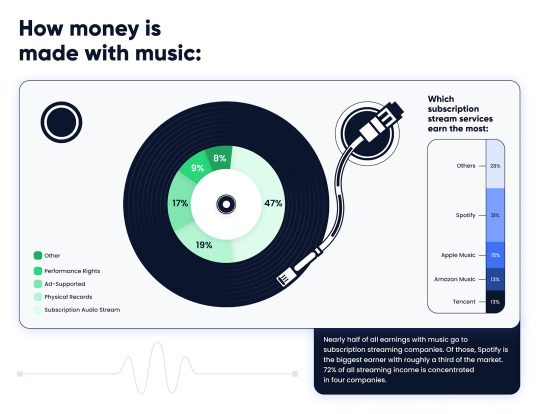
Blockchain Data Structure: Blocks and Transactions
The blockchain is comprised of three main engineering elements: blocks, transactions, and the distributed network. Transactions containing details like sender, receiver, and amount are grouped into blocks. Each validated block is cryptographically chained to the preceding one. This creates an irreversible chronological chain of transactions.
Technical Elements: Decentralization, Cryptography, and Consensus Mechanisms
Decentralization mean no central authority controls the network. Cryptographic functions like hashing and digital signatures ensure security. Consensus mechanisms like proof-of-stake allow decentralized nodes to agree on the network's state. These core precision elements enable blockchain's resilience and transparency.
Smart Contracts: Self-Executing Code on the Blockchain
Smart contracts are programmatic scripts containing business logic that automatically execute when specified conditions are met on the blockchain. They are deployed to and executed by the decentralized network. The determinism and isolation of the execution environment ensures verifiable and predictable computation.
For on-demand music streaming, smart contracts enable automated royalty distribution and rights management.
Technical Impact of Blockchain on Music Streaming Apps
Enhancing Royalty Distribution Efficiency
Technological Details of Smart Contract-Based Royalty Distribution
Smart contracts can be programmed to distribute royalties automatically based on pre-defined rates and usage metrics. Payment rules and recipient addresses are encoded, which enables real-time payment processing without manual intermediaries.
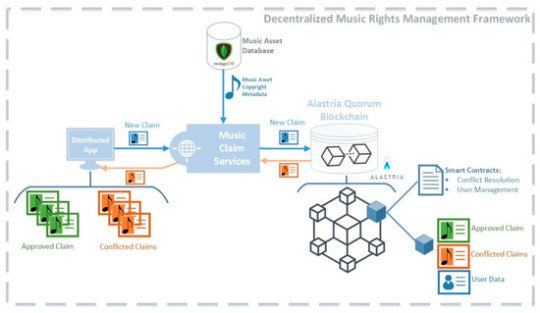
Real-Time Payment Processing
Royalty distribution can be technically optimized to process micro-payments in real-time each time a song is streamed. This granular approach increases accuracy and allows artists to receive instant payments.
Eliminating Intermediaries and Reducing Latency
With an automated system handling royalty calculations and payments, slow manual processing by intermediaries is reduced. This analytical innovation enhances the timeliness of royalty delivery across complex supply chains.
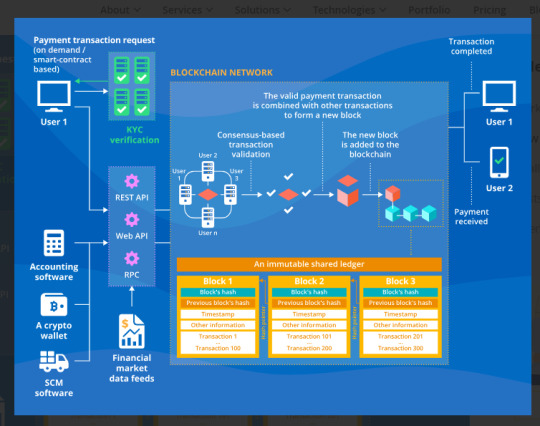
Transparency in Licensing and Rights Management
Immutable Recording of Copyright Ownership
Blockchain's immutable ledger allows copyright ownership and licensing deals to be indelibly recorded. This single source of truth provides clarity on rights ownership to platforms, artists, and publishers.
Automation of Licensing
Licensing terms can be technologically automated by encoding them into smart contracts. Any Music App Development company could instantly verify rights ownership and licensing status for any track via the blockchain rather than through opaque negotiations.
For example, Dot Blockchain has developed a systematic architecture for recording and automating usage-based licensing on media blockchains.
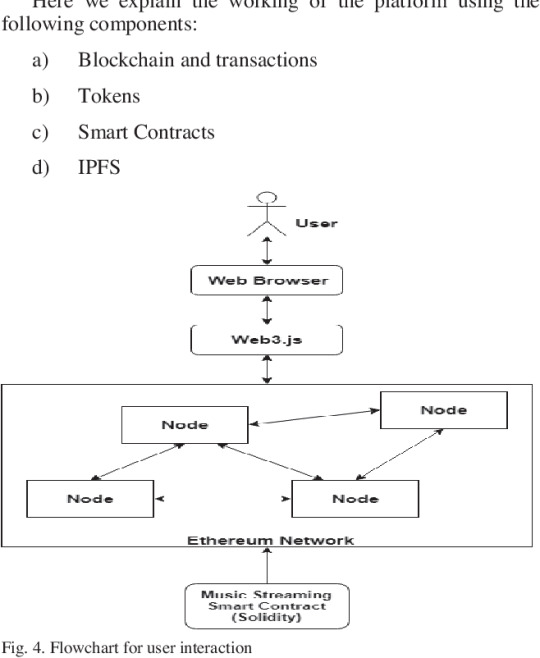
User Experience Enhancements
Seamless Payments and Microtransactions
Music Streaming App can leverage blockchain payments to allow frictionless microtransactions between artists and fans for content and experiences.
Real-Time Analytics for Artists
Artists can be empowered through real-time analytics of fan engagement and royalty data tracked on-chain. Music Streaming Platforms like Revelator provide these procedural capabilities.
Fan Engagement through Tokenization
Loyalty schemes and fan experiences can be built using complex tokenization mechanisms like NFTs for unique engagement opportunities.
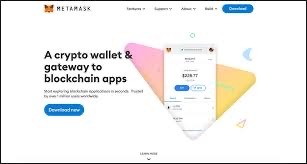
Key Differences Between Traditional Music Systems and Blockchain
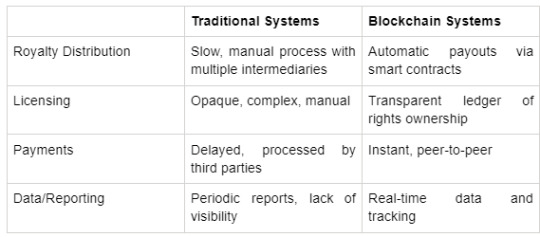

Blockchain Music Streaming App Services
Several startups are already developing blockchain-based music streaming platforms as alternatives to popular apps like Spotify.
For instance, Audius is a streaming service and decentralized protocol that connects artists directly with fans. Artists can share their music and be compensated immediately with the platform’s native AUDIO token. Fans can support artists through subscriptions and tips. Over 100,000 independent artists have joined Audius to date.

Other examples include PeerTracks and Musicoin. These platforms demonstrate how blockchain enables fairer value exchange and compensation for creators in music streaming. As blockchain achieves mainstream adoption, decentralized streaming services could potentially disrupt incumbents.
Limitations of Blockchain in Music Streaming Apps
While blockchain promises many benefits, there are limitations to consider:
Scalability – Blockchains like Ethereum can currently only process 10-20 transactions per second.
Major Music Streaming App Development companies process millions of streams per second, so blockchains need greater scalability to support high volumes. Meanwhile, the computational demands of smart contract execution also limit scalability. Leading music streaming platforms handle millions of plays per second - a massive scalability gap.
However, solutions are emerging, including Ethereum's shift to proof-of-stake consensus, layer 2 scaling protocols like state channels, alternative high-speed blockchains like Solana, and sharding mechanisms. Though still maturing, these innovations illustrate pathways to improve blockchain scalability to meet mainstream demands significantly.
Volatility – Cryptocurrency payments lead to exposure to volatile markets. Appropriate stablecoin solutions are needed to limit risk.
However, stablecoin technology is rapidly evolving through algorithmic designs, collateralization models, and decentralized governance to stabilize valuation. These innovations can potentially reduce the barriers posed by crypto volatility.
Adoption – Moving an entire industry to a new paradigm is challenging. Mainstream adoption will take time, education, and proper governance mechanisms.
Ongoing technology and design improvements can enhance the onboarding process for users.
Centralization – Ironically, many blockchain-based platforms are still centralized in some aspects. Truly decentralized governance is difficult to achieve initially.
Regulatory uncertainties remain a hurdle - decentralized platforms must still comply with copyright laws, licensing rules, royalty rate regulations, and territorial restrictions. Technical innovation alone cannot fully decentralize music streaming governance without legal evolution. However, blockchain communities continue working to increase decentralization through both technological and policy advances.
The potential is clear, but it will take time for blockchain to mature and see significant real-world adoption at scale across music streaming.
Conclusion
As you’ve seen, Blockchain technology presents a fascinating opportunity to evolve the systematic architecture of Music Streaming App Development. Though still facing growing pains around scalability and user adoption, blockchain allows for an open, transparent, and creator-driven music ecosystem.
Integrating blockchain in music streaming appsunlocks valuable, proficient capabilities like instant royalty processing, verifiable licensing rules, and direct fan engagement opportunities. As the technology matures, we can expect more music streaming app startups to harness blockchain to address industry pain points.
Mainstream adoption by major streaming players may take time, given the skillful lift. However, early innovators like Audius highlight the progress and possibilities.
The road ahead is challenging, but music fans, artists, and technologists alike should pay attention as blockchain lays the foundation for the future of music streaming app development.
For those excited about building the next wave of music innovation, partnering with experienced professional teams can help bring blockchain-powered music app ideas to reality. A leading music streaming app development company like Consagous Technologies has the expertise to handle complex blockchain integrations and deliver successful streaming app projects.
By collaborating with proven, knowledgeable talent, the possibilities of blockchain-transforming streaming become closer than ever!
Your Questions Answered
Q: What's the hype around blockchain and music streaming apps?
A: Blockchain has the potential to shake up how music streaming apps work behind the scenes! It offers a transparent, methodical framework to automate royalty payments, record copyright ownership, and create new ways for artists and fans to interact. The hype is around blockchain, making the music streaming app development business more fair and open.
Q: Can blockchain really fix the issues around compensating artists fairly?
A: While blockchain can make royalty distribution more transparent through smart contracts, it does not inherently address the underlying revenue splits, which many argue unfairly favor platforms over artists.
Blockchain provides the technological infrastructure to enforce royalty payments in a timely, transparent way. But, the rules and percentages programmed into the smart contracts could still shortchange artists.
Q: How would blockchain change the user experience of music apps?
A: Listeners could enjoy seamless in-app micropayments, unlock special content through NFT tokens, get rewards for promoting songs, and more. Artists would gain real-time analytics on fan engagement powered by blockchain's transparent data.
Q: Which big music streaming platforms are using blockchain now?
A: None have embraced blockchain in its entirety. But startups like Audius have working models showing blockchain's potential.
Major players are keeping an eye on blockchain, but mainstream adoption is still a work in progress.
Q: How can blockchain support independent artists?
A: By reducing platform dominance and moving interactions to the blockchain, independent artists could gain more ownership over relationships with fans and fair compensation. It offers technological paths to sustain independence.
0 notes
Text
https://theappideas.com/cost-to-develop-a-music-streaming-app/
How Much Does it Cost to Develop a Music Streaming App?
Want to develop a music streaming app? Let's understand about music streaming app development costs & features & more in this blog.
#Music Streaming App#]Music Streaming App Development#Music Streaming App Development in India#Music Streaming App Development Company#Music Streaming App Development Service#Music Streaming App Development Company in India
0 notes
Text
OyeLive Clone Script | Live Streaming App Development company
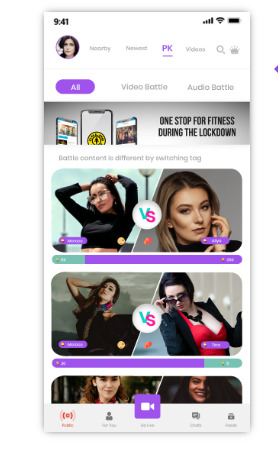
Omninos Solutions a development Social Media App in Mohali, Chandigarh Provides Best OyeLive Clone App, OyeLive clone app most remarkable app.
OyeLive is a popular live video streaming app that allows users to share their talents, thoughts, and experiences in real-time. Picture it as a platform where you can host your own live show and interact with an audience from all around the world.Now, imagine having the same kind of experience tailored specifically to your needs and requirements! With OyeLive Clone development or using a live streaming script, you can create your own version of this fantastic app.
0 notes